I want to talk about the 1976 movie based on Stephen King’s 1974 (breakout) novel, Carrie.
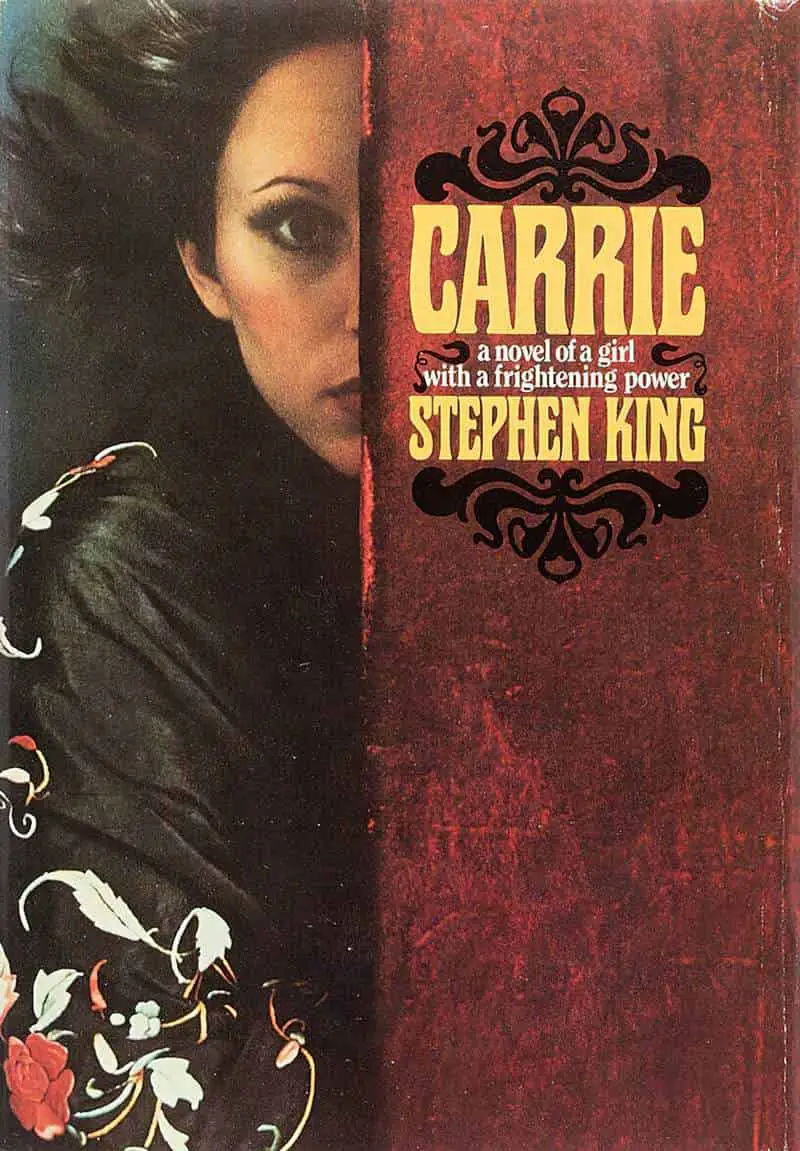
Critics don’t like the new one much. The criticism is mostly that the remake was unnecessary because the first adaptation was so good. The original has a slower, more sinister pace and the main thing the reboot did was to add the social media dimension and some modern SFX. However, Carrie is — unfortunately — a timeless story of high school exclusion and bullying.
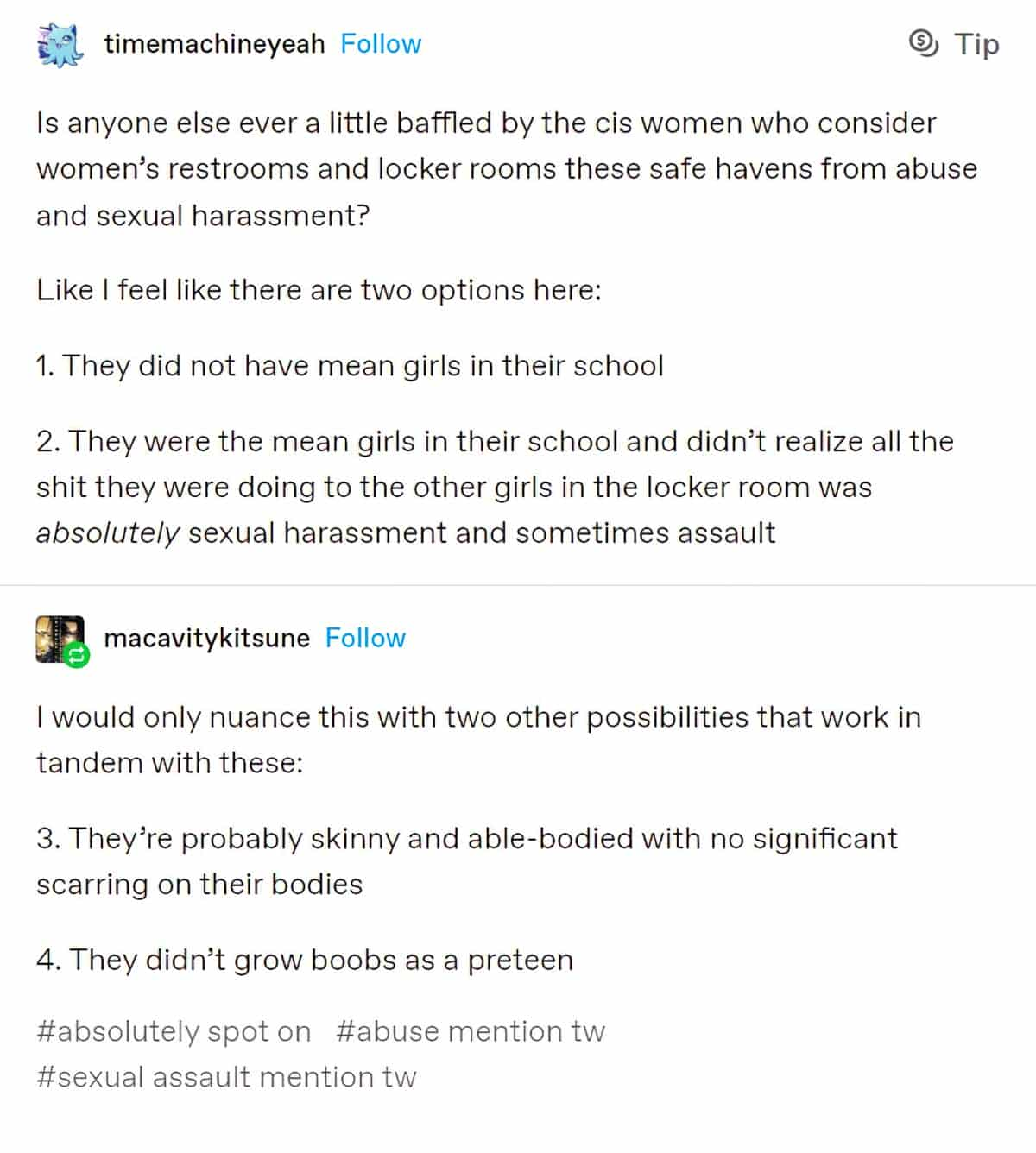
PREMISE OF CARRIE
A shy girl, outcasted by her peers and sheltered by her religious mother, unleashes telekinetic terror on her small town after being pushed too far at her senior prom. (In the book it’s called the Spring Ball — a lot of the slang/words have been updated.)
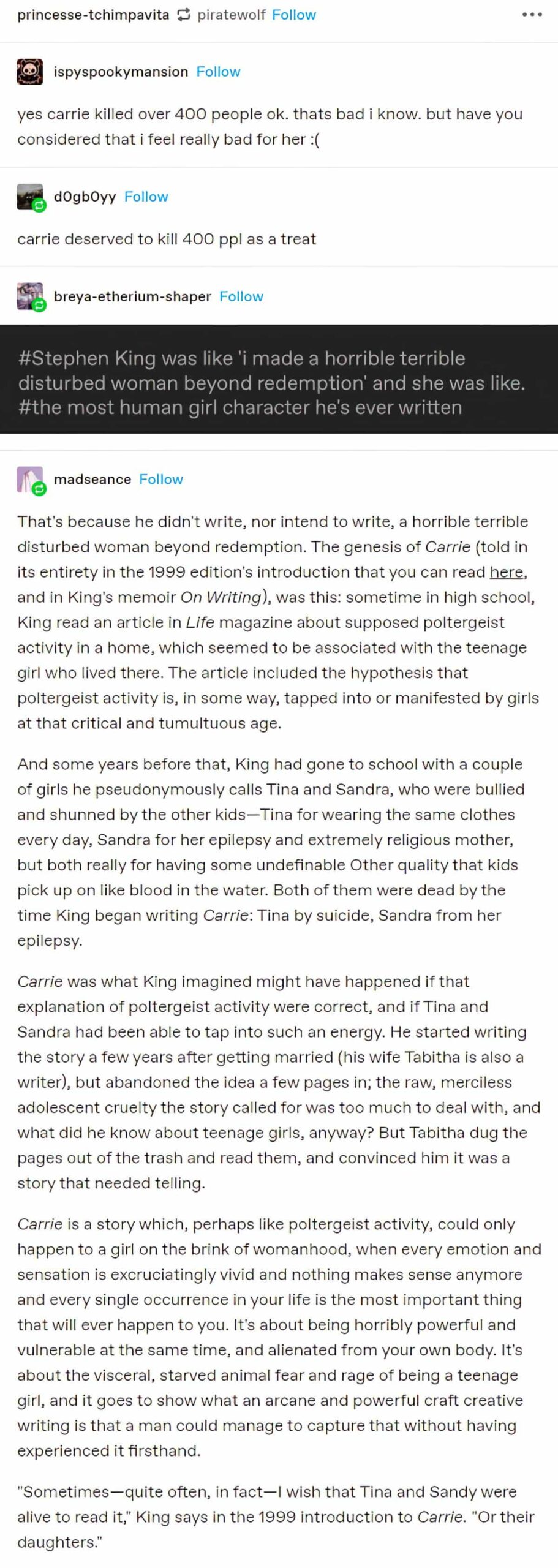
SENTENCE BEHIND THE STORY OF CARRIE
Your own powers can be the end of you.
I don’t believe the designing principle of this film is its main strength. Instead it makes an emotional promise: Watch this film and you will be thrilled and entertained. It possibly aims to sadden. (I don’t feel saddened by this remake.)
It also makes an intellectual promise to a modern audience: Watch this and you’ll learn of a different, slightly off-kilter world than this.
Horror films require us to face the unknown — they allow us to face our fears and put them into context. They shape our belief system, and provide a safe space to explore. Carrie was notable for being one of the few to broach the topic of menstruation which, 40 years later, is still somewhat taboo. There is nowhere near as much menstruation in children’s literature as there are girls dealing with it in real life, outside a few standout books from authors such as Judy Blume.
GENRE BLEND OF CARRIE
drama, horror
The horror genre is one of the most highly symbolic forms (along with Westerns and science fiction). The origin of the horror in this story comes from demonic forces. Another example of this kind of horror is The Exorcist. Other horrors might come from whatever lies beyond death (Dracula) or from humans daring to fool around with nature (Frankenstein). Those are the big three.
Interestingly, the genre of the 1976 adaptation is simply ‘horror’ according to IMDb. This remake must have been aiming for a bit more character development with the addition of ‘drama’.
The horror film is a genre aimed largely at pubescent and adolescent youth — the same people who love to scream on roller coasters and look for out-of-control sensations elsewhere in their lives. Attracting people who are not part of this constituency is often difficult. The Exorcist and Rosemary’s Baby did so by dealing with families in a serious way — something the mostly young audience for horror films isn’t especially interested in seeing.
— Howard Suber
I don’t think Carrie manages to deal with family matters in any serious way. The mother is not a rounded character. This feels all horror, not much drama.
The Female Gothic
Stephen King’s Carrie is a descendent of the Female Gothic, invented by writers such as Anne Radcliffe, Mary Shelley and Charlotte Bronte.
Features of the Female Gothic Novel:
- Gothic texts are based upon Medieval society.
- Following a Gothic Bildungsroman-esque plot, the Female Gothic allowed its readers to graduate from adolescence to maturity along with its heroine.
- The readers of these novels didn’t lead very thrilling lives — many restrictions — this was their outlet
- The Female Gothic is about the suppression of female sexuality, or challenges the gender hierarchy and values of a male-dominated culture.
- The natural cause of terror is not the supernatural, but rather female disability and societal horrors: rape, incest and the threatening control of the male antagonist.
- The female protagonists pursued in these texts are often caught in an unfamiliar and terrifying landscape, delivering higher degrees of horror.
- The end result, however, is the explained supernatural, rather than terrors familiar to women such as rape or incest, or the expected ghosts or haunted castles.(For example, the female protagonist will think there’s a ghost in the dungeon but when she gets down there it’s actually a real man wanting to rape her.)
In Stephen King’s variety of the Female Gothic, we have an out-and-out evil boy pulling strings behind the scenes, but female characters feature as all shades of good/bad.
STORYWORLD OF CARRIE
Symbolism
Many horror films could correctly be called “supernatural films” but this might reveal more than we care to acknowledge about the religious origins of so much horror.
— Howard Suber
She was alone with Momma’s angry God.
The blue light glared on a picture of a huge and bearded Yahweh who was casting screaming multitudes of humans down through cloudy depths into an abyss of fire. Below them, black horrid figures struggled through the flames of perdition while the Black Man wat on a huge flame-colored throne with a trident in one hand. His body was that of a man, but he had a spiked tail and the head of a jackal.
— Stephen King, Carrie
The setting of Carrie is very recognisable as our own but King includes supernatural elements.
Night journeys are a common element seen throughout Gothic literature. They can occur in almost any setting, but in American literature are more commonly seen in the wilderness, forest or any other area that is devoid of people. A prom, always held after dark, provides the perfect reason for a night journey.
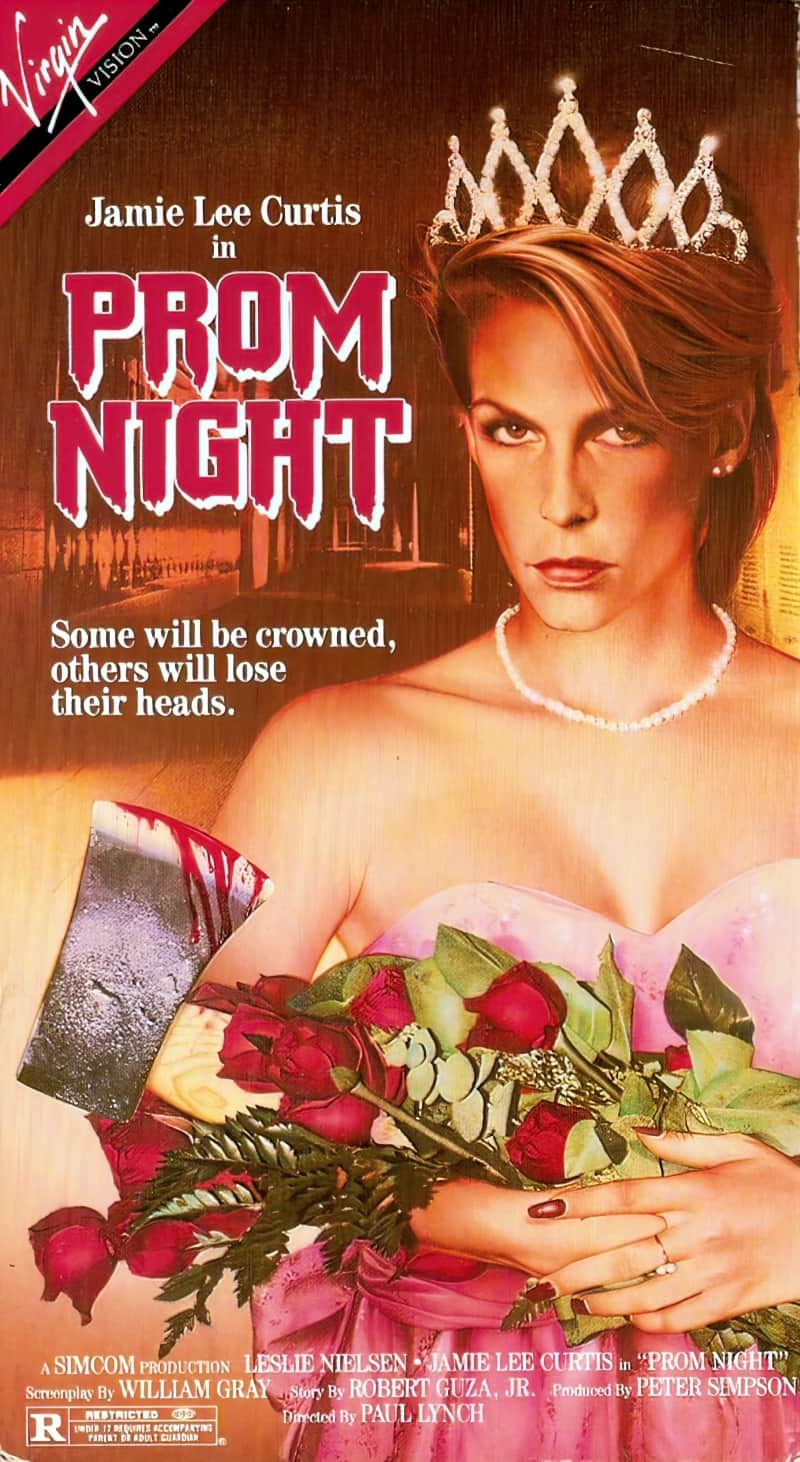
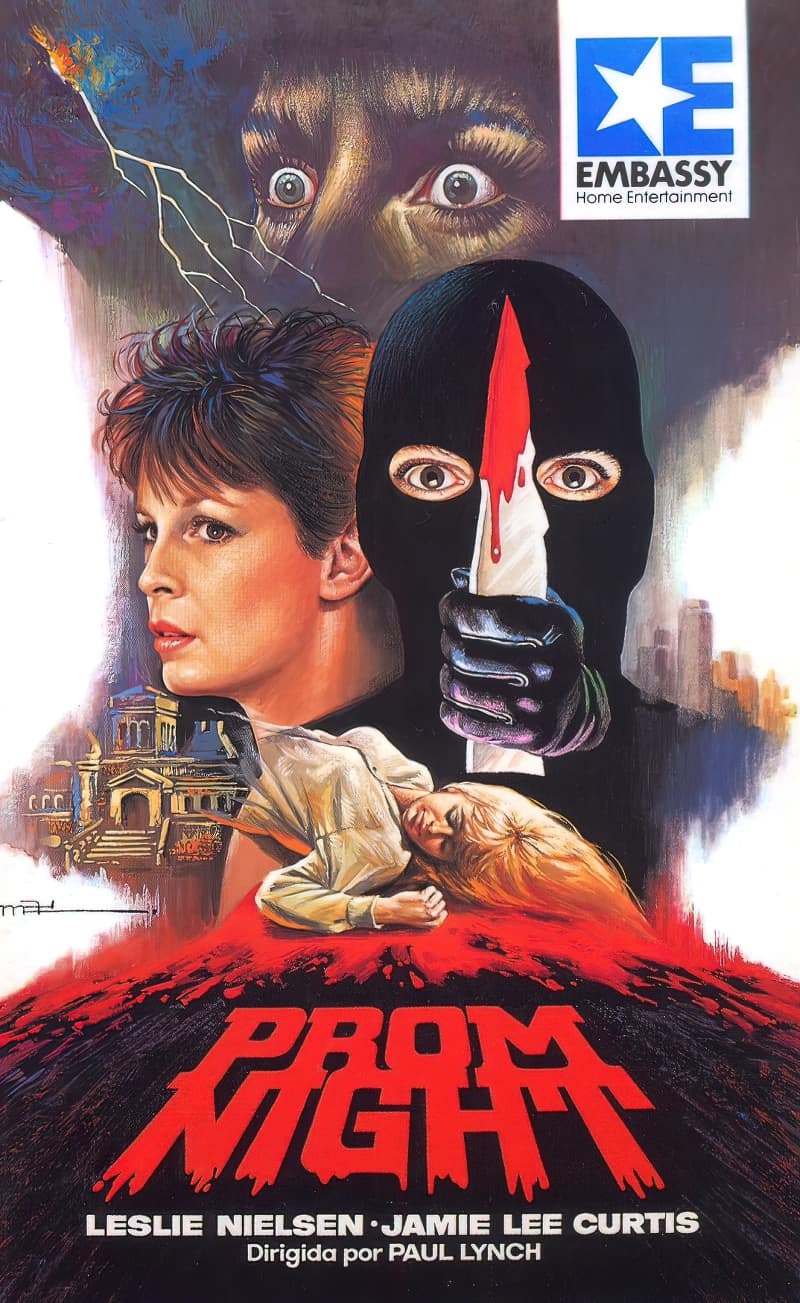
Fantasy Elements
Stephen King writes what some have called ‘supernatural realism’. We might call it ‘magical realism‘ but I think ‘supernatural realism’ is a better descriptor. Carrie is set in the real world but there are supernatural elements. Carrie has the power of telekinesis and might be an ancestor of Roald Dahl’s Matilda in a sense. This is a world in which anything could happen.
There is a bit of a gothic vibe going on in this story, with the blue, cottage-like house looking peachy from the outside but once we get inside we’re shown cupboards used as prison, a dark and stifling atmosphere and a ‘mad woman in the attic’.
Era
The film is set in the USA in a mainly white suburban town in Maine called Chamberlain but the film is shot in Ontario. Here’s the house. Note that the creators of the remake decided to keep a general 1970s vibe in the setting — it’s also fitting that Carrie’s mother would have little money and therefore have to drive a car from that era. The original novel starts in 1966 and the main events happen 1979.
She continued to walk down the street toward the small white house with the blue shutters. The familiar hate-love-dread feeling was churning inside her. Ivy had crawled up the wests side of the bungalow (they always called it the bungalow because the White house sounded like a political joke and Momma said all politicians were crooks and sinners who would eventually give the country over to the Godless Reds who would put all the believers of Jesus—even the Catholics—up against the wall), and the ivy was picturesque, she knew it was, but sometimes she hated it. Sometimes, like now, the ivy looked like a grotesque giant hand ridged with great veins which had sprung up out of the ground to grip the building. She approached it with dragging feet.

Deaths In Schools
By the 1970s there had already been enough mass executions in American schools due to gun violence for the fear of a blood bath at a prom to be based upon a real, deep-seated fear. There have been many more school shootings since then. Unfortunately the terror of Carrie’s loner rampage still feels all too real.
STORY STRUCTURE
King wrote the novel as epistolary, using a combination of letters, news clippings, magazine articles, and passages from books. Sometimes when an epistolary story is adapted for screen some of that form is maintained, often with use of a storyteller narrator (the person who wrote the letters). But because I hadn’t read the book before watching the movie it was a bit of a surprise to find it was an epistolary novel. There’s nothing left of that. The reason for the epistolary form must have been to create a sense of realism for the reader.
SHORTCOMING
The desire to be known, to be seen, and to be powerful in your own sphere is a common desire in both real people and in the fictional realm. This particular desire seems to be having a moment in the West. The promotional material for the Carrie reboot reminds me very much of the posters which came out for Breaking Bad around the same time. Carrie and Walter White have the same psychological need.
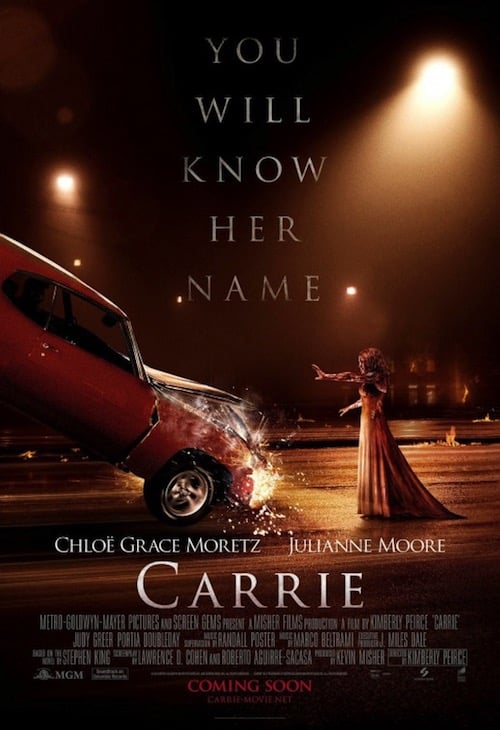
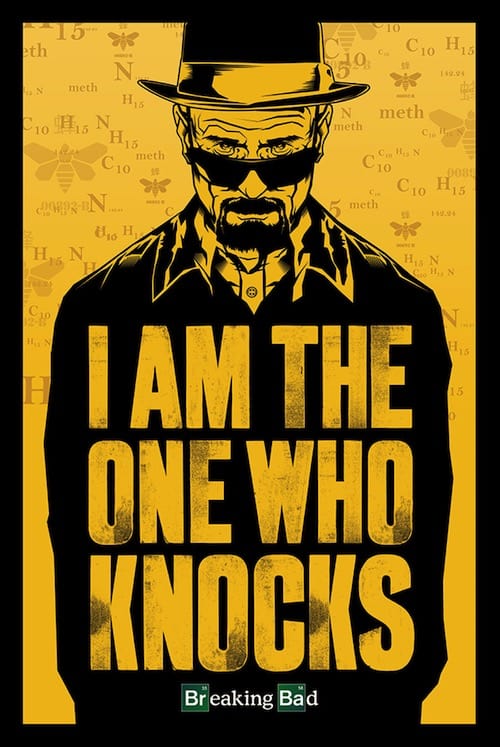
Carrie’s problem is that she is an out-and-out social outcast. High schools are a great arena to show social exclusion — Vince Vaughn even sent Walter White back to school and made him the butt of some teenagers’ jokes in the pilot episode as they mock him washing cars — there’s something about mockery you get at school that stays with you your whole life, even when you engage your logical adult brain and realise your high school opponents had their own issues which had nothing to do with you.
The epistolary form of King’s novel allows for a variety of opinions on Carrie, leaving the reader with no ‘true’ impression of what she really looked like (and consequently, who she really was.) Described by the narrator as ugly, fat and blemished, she is described later as ‘pretty’. Carrie herself considers herself repulsive, especially her face, covered in blackheads and clusters of pimples. These various accounts of Carrie add to the gossipy, unreliable nature of the retelling:
The girls stopped, realizing that fission and explosion had finally been reached. It was at this point, when looking back, that some of them would claim surprise. Yet there had been all these years, all these years of let’s short-sheet Carrie’s bed at Christian Youth Camp and I found this love letter from Carrie to Flash Bobby Pickett let’s copy it and pass it around and hide her underpants somewhere and put this snake in her shoe and duck her again, duck her again; Carrie tagging along stubbornly on biking trips, known one year as pudd’n and the next year as truck-face, always smelling sweaty, not able to catch up; catching poison ivy from urinating in the bushes and everyone finding out (hey, scratch-ass, your bum itch?); Billy Preston putting peanut butter in her hair that time she fell asleep in study hall; the pinches, the legs outstretched in school aisles to trip her up, the books knocked from her desk, the obscene postcard tucked into her purse; Carrie on the church picnic and kneeling down clumsily to pray and the seam of her old madras skirt splitting along the zipper like the sound of a huge wind-breakage; Carrie always missing the ball, even in kickball, falling on her face in Modern Dance during their sophomore year and chipping a tooth, running into a net during volleyball; wearing stockings that were always run, running, or about to run, always showing sweat stains under the arms of her blouses; even the time Chris Hargensen called up after school from the Kelly Fruit company downtown and asked her if she knew that pig poop was spelled C-A-R-R-I-E; Suddenly all this and the critical mass was reached. The ultimate shit-on, put-down, gross-out, put-down, long searched-for, was found. Fission.
Narrator’s description of Carrie, close-third-person viewpoint through the eyes of the girls in the changing room
“She was such a pretty girl,” Stella Horan resumes, lighting another cigarette. “I’ve seen some high school pictures of her, and that horrible fuzzy black-and-white photo on the cover of Newsweek. I look at them and all I can think is, Dear God, where did she go? What did that woman do to her? Then I feel sick and sorry. She was so pretty, with pink cheeks and bright brown eyes, and her hair the shade of blonde you know will darken and get mousy. Sweet is the only word that fits. Sweet and bright and innocent. Her mother’s sickness hadn’t touched her very deeply, not then.
Opinion of a minor character Stella Horan
She looked up from her books with a startled wince, as if expecting a blow. The day was overcast and the bank of fluorescents embedded in the ceiling was not particularly kind to her pale complexion. But he saw for the first time (because it was the first time he had really looked) that she was far from repulsive. Her face was round rather than oval, and the eyes were so dark that they seemed to cast shadows beneath them, like bruises. Her hair was darkish blonde, slightly wiry, pulled back in a bun that was not becoming to her. The lips were full, almost lush, the teeth naturally white. Her body, for the most part, was indeterminate. A baggy sweater concealed her breasts except for token nubs. The skirt was colorful but awful all the same: It fell to a 1958 midshin hem in an odd and clumsy A-line. The calves were strong and rounded (the attempt to conceal these with heathery knee-socks was bizarre but unsuccessful) and handsome.
From Tommy’s point of view Carrie is ‘far from repulsive’.
Carrie’s psychological shortcoming is that she needs to belong somewhere. She is totally alone in the world. Like any teenager (or adult), she wants to fit in.
Found written repeatedly on one page of a Ewen Consolidated High School notebook owned by Carrie White:
Everybody’s guessed/that baby can’t be blessed/’til she finally sees that she’s like all the rest….
Stephen King, Carrie
In this movie adaptation she has been homeschooled until very recently, which is how the screenwriters get around the weird fact that Carrie doesn’t know what periods are. It’s hard for a modern audience to believe a 16 year old girl could not know anything about that. Stephen King had to lampshade that one quite heavily in his 1976 novel, especially since in the novel Carrie has been attending school all along.

Psychological overlay is an element connected to how characters within an American Gothic novel are affected by things like the night and their surroundings. In Carrie’s case, Carrie’s menstruation is connected to everyone’s general fear of blood. Blood symbolism can be seen throughout the film, culminating famously in the big struggle scene.
Does Carrie have a moral shortcoming? Is she treating others badly? A fairytale victim character like this doesn’t need to show us that she is a fully rounded human being with flaws — Carrie is not a normal human being anyhow. She’s kind of the second coming, perhaps from the devil. In the films, at least, Carrie does not demonstrate any moral shortcomings. She is a Gothic Good Girl. (The virginal character in a Female Gothic.)
DESIRE
Carrie wants to go to the ball. This is intimately connected to her psychological shortcoming of course — her need to be part of something.
OPPONENT
King has used a number of character archetypes from the gothic novel to create his setting:
- Virginal maiden – young, beautiful, pure, innocent, kind, virtuous and sensitive. Usually starts out with a mysterious past and it is later revealed that she is the daughter of an aristocratic or noble family. (Carrie)
- Older, foolish woman (Mrs White)
- Hero (Sue)
- Tyrant/villain (Chris and her boyfriend)
- Bandits/ruffians (the cast of school girls who mock Carrie rather than standing up for her)
- Clergy – always weak, usually evil (not present in the film adaptation — the clergy is the invisible force behind the uber-Christian Mrs White). In the novel we do have a modified ‘clergy’ stand-in in the form of Mr P. P. Bliss:
Mr. P.P. Bliss, who had written this hymn and others seemingly without number, was one of Momma’s shining examples of God at work upon the face of the earth. He had been a sailor and a sinner (two terms that were synonymous in Momma’s lexicon), a great blasphemer, a laugher in the face of the Almighty. Then a great storm had come up at sea, the boat had threatened to capsize, and Mr. P. P. Bliss had gotten down on his sin-sickly knees with a vision of Hell yawning beneath the ocean floor to receive him, and he had prayed to God. M. P.P. Bliss promised God that if He saved him, he would dedicate the rest of his life to Him. The storm, of course, cleared immediately.
Brightly beams our Father’s mercy
From his lighthouse evermore
But to us he gives the keeping
Of the lights along the shoreAll of Mr. P. P. Bliss’s hymns had a seagoing flavour to them.
Stephen King, Carrie
The watchful eye of the clergy is symbolised by the picture The Unseen Guest:
She walked up the hall and put her coat in the closet. A luminous picture above the coat hooks limned a ghostly Jesus hovering grimly over a family seated at the kitchen table. Beneath was the caption (also luminous): The Unseen Guest
Stephen King, Carrie
On the other hand, the teachers at the school might be seen as the modern equivalent of the Gothic clergy, in charge of the virgin’s life, seeking counsel.
Carrie’s mother might as well be a mythical monster or a fairytale witch. The (semi) realistic setting allows us to read her as a woman with mental health challenges but her archetype predates such knowledge. American Gothic novels in particular tend to deal with a “madness” in one or more of the characters and carry that theme throughout the novel. In his novel Edgar Huntly or Memoirs of a Sleepwalker, Charles Brockden Brown writes about two characters who slowly become more and more deranged as the novel progresses. King’s novel The Shining is also about Descent Into Madness. Non-King examples include Sunset Boulevard, Black Swan, Margaret Atwood’s Surfacing and Apocalypse Now.
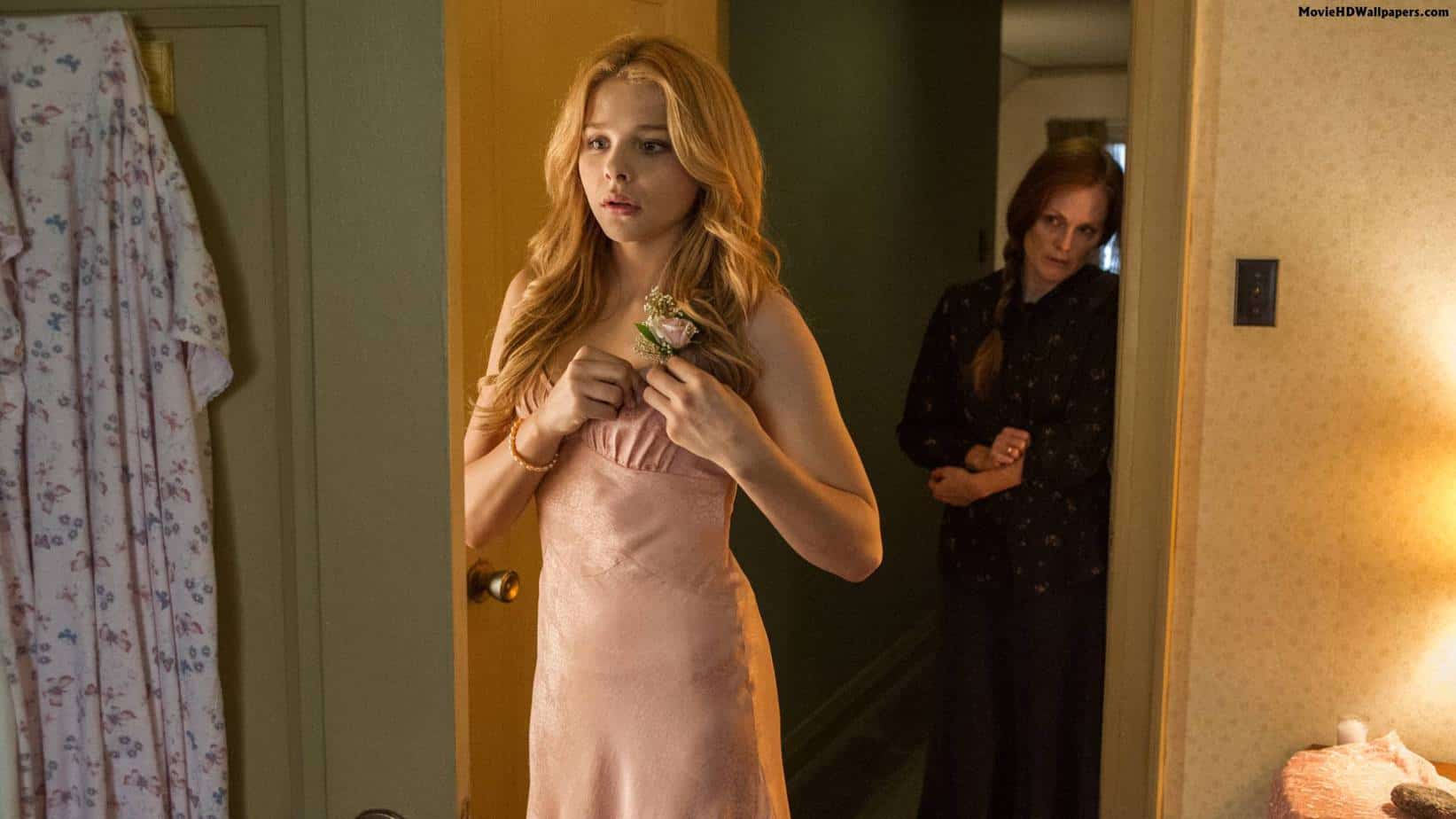
What Carrie lacks in complexity, Stephen King makes up for in his web of her opponents. In Carrie’s classmates we see all shades of bullying, from the out-and-out evil, dark-haired girl (Chris Hargensen) to the blonde* girl who wants to do the right thing but ends up making Carrie’s life worse (Sue Snell). Even the teacher (Miss Desjardin) has excellent intentions but inadvertently makes Carrie’s life worse by setting in action the suspension of Chris Hargensen, who because of this plots the blood in a bucket incident.
*In the novel Sue has dark hair.
King apparently wrote this book inspired by catty bitches he knew from school and from teaching high school. So I don’t kid myself that King is particularly sympathetic to the teenage girl at this point in his writing career. But in contrast to the ‘women are catty bitches’ reading, King turns Chris into a bullied victim herself. Her boyfriend is truly bad; if she hadn’t had sex with him he planned to rape her; later, he does in fact rape her.
but it had all begun to slip out of her hands, and it made her uneasy. If she had not given in willingly on Monday, he would have taken her by force.
Chris is punished, partly for her willingness to have sex, partly for her short skirt and also, partly, for being really mean to people.
There are lots of people—mostly men—who aren’t surprised that I asked Tommy to take Carrie to the Spring Ball. They are surprised that he did it, though, which shows you that the male mind expects very little in the way of altruism from its fellows.
Here King is kinder on men.
Carrying the pails back to the trunk, his mind made a dim, symbolic connection. Pig blood. That was good. Chris was right. It was really good. It made everything solidify.
Pig blood for a pig.
The bad boys are playing a different, more basic game. The menstruation connection is from the girls; the boys think they’re simply insulting Carrie by comparing her to an animal.
MYSTERY
As we get to know the opponents and what they are capable of, we are also introduced to a mystery: What is the exact nature of Carrie’s newfound superpower?
Revelation is important in any story containing a mystery. (TV writers call them ‘reveals’.) But a story doesn’t have to be ‘mystery’ or ‘detective’ genre to contain a mystery element. Part of this story’s dynamic is to have Carrie find out/realise something that’s been true (latent) for some time: That she is a witch, and has inherited her powers from her grandmother. The story’s momentum comes from the finding out, and during the big struggle sequence we will see the full extent of Carrie’s superpowers.
Much Gothic literature also includes a mystery of some kind. For instance, Jane Eyre has his first wife in the attic. Rebecca’s new husband Maxim went and killed his first wife in a re-telling of Bluebeard. Notice that these Gothic mystery novels are also named after the female leads.
King’s novel tells us near the beginning that Carrie has the powers of telekinesis, so the mystery there is in waiting to see how she’s going to use it.
PLAN
“Wait. Just wait. Let me talk. You want me to ask Carrie White to the Spring Ball. Okay, I got that. But there’s a couple of things I don’t understand.”
“Name them.” She leaned forward.
“First, what good would it do?” And second, what makes you think she’d say yes if I asked her?”
“Not say yes! Why–” She floundred. “You’re… everybody likes you and–“
“We both know Carrie’s got no reason to care much for people that everybody likes.”
“She’d go with you.”
“Why?”
Pressed, she looked defiant and proud at the same time. “I’ve seen the way she looks at you. She’s got a crush. Like half the girls at Ewen.”
He rolled his eyes.
“Well, I’m just telling you,” Sue said defensively. “She won’t be able to say no.”
“Suppose I believe you,” he said. “What about the other thing?”
“You mean what good will it do? Why… it’ll bring her out of her shell, of course. Make her…” She trailed off.”
“A part of things? Come on, Suze. You don’t believe that bullshit.”
“All right,” she said. “Maybe I don’t. But maybe I still think I’ve got something to make up for.”
In King’s story it’s not Carrie who has the plan. In fact, Carrie is a co-star at best. Despite the character of Carrie carrying the title of the work, and huge images of the actress emblazoned across the posters, the person who undergoes the character arc is Sue Snell who, like the majority of empathetic readers following along, wants to do something to help the outcast underdog. However, we don’t see quite enough of Sue in this film adaptation to rightly call her the main character. Both these girls are the stars — mirror images of each other in many ways:
- Carrie is an outcast/Sue is popular
- Carrie is lacking in confidence/Sue is full of confidence
- Sue has Tommy for a boyfriend/Carrie goes to the ball with him but knows he is very much not her boyfriend
- Carrie starts the book with blood between her thighs/the book ends with blood between Sue’s
It is Sue who comes up with The Plan that sets the plot in motion. She will offer her popular boyfriend to Carrie as a companion to the ball. This is of course a condescending gesture and Carrie can see right through it — the only way any girl would offer her boyfriend to another girl for an important life event like this is because she knows she’s no competition whatsoever. However, the plan works. It is undermined by Chris and her pig-killing guy friends.
BIG STRUGGLE
In the book, Stephen King puts the entire big struggle sequence into a section called ‘Part Two’. It comprises almost half of the book.
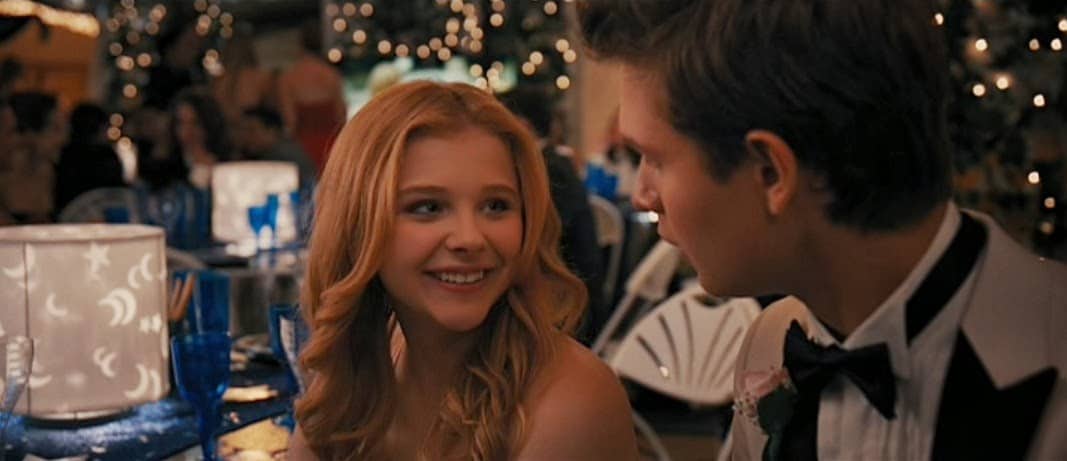
The sequence beginning with the bucket of blood on Carrie’s head. The blood in the bucket sequence is of course the set piece of this film and even if you forget every other scene, this is the bit which eventually enters pop culture. In fact, you probably know this scene even without ever watching the film or reading the book. Part of what makes this so successful is the build up, in which we see Chris as a puppeteer, literally pulling the strings (but of the bucket) from above, as a symbol of omniscient evil against good. (Her own abusive boyfriend is using Chris as his puppet, and also as his non-consenting sex doll.)
Structurally speaking, I’m guessing this is the part which could have posed the biggest hurdle for the writer(s). Miraculous survivals are elements within American Gothic literature in which a character or characters will somehow manage to survive some feat that should have led to their demise. The problem is, with Carrie’s anger-fuelled telekinesis, Carrie is all powerful. She can stop an oncoming car and murder people without even touching them. This superpower means the opponent is fully at her mercy. Sure, the revenge is sweet to watch, but when a character is so much more powerful than their opponent this makes for a boring blood bath.
To create a satisfying big struggle sequence, King gave Carrie two separate big struggles, one after the other with a quiet moment in the middle:
- The big struggle on stage against everyone at school
- The big struggle against her mother, who has been proven to be a formidable monster and who stabs her quietly in the back.
Sue watches as the house is destroyed. The house can be considered a character in the story, or at least an extension of the women who live there. (In Gothic novels the setting is always a character in itself.)
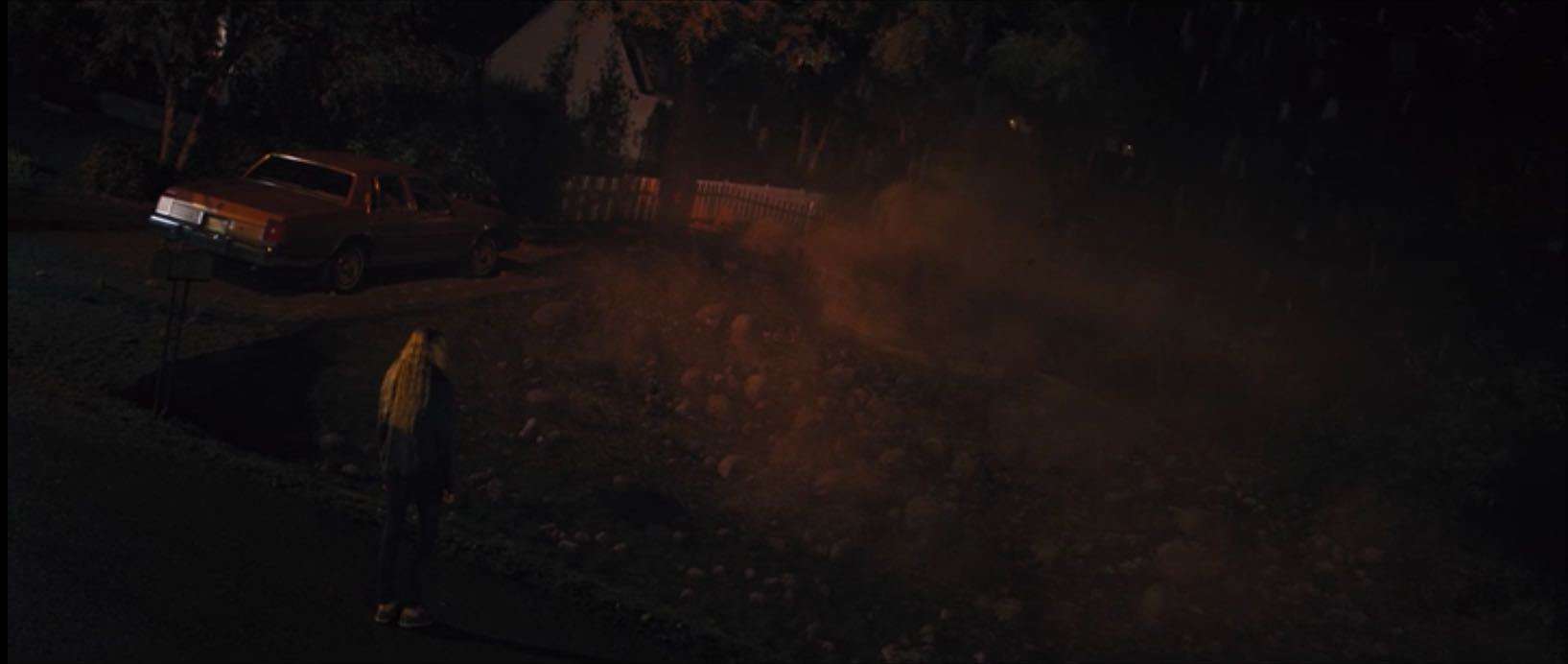

ANAGNORISIS
In the book, this marks the beginning of Part Three. I’m guessing King thinks (or thought) in terms of three act structure as a writer.
We see Sue Snell see her gazing at Carrie’s headstone. Her voiceover says, “You can only push someone so far before they break.” This is her revelation. It’s an anti-bullying message at its heart.
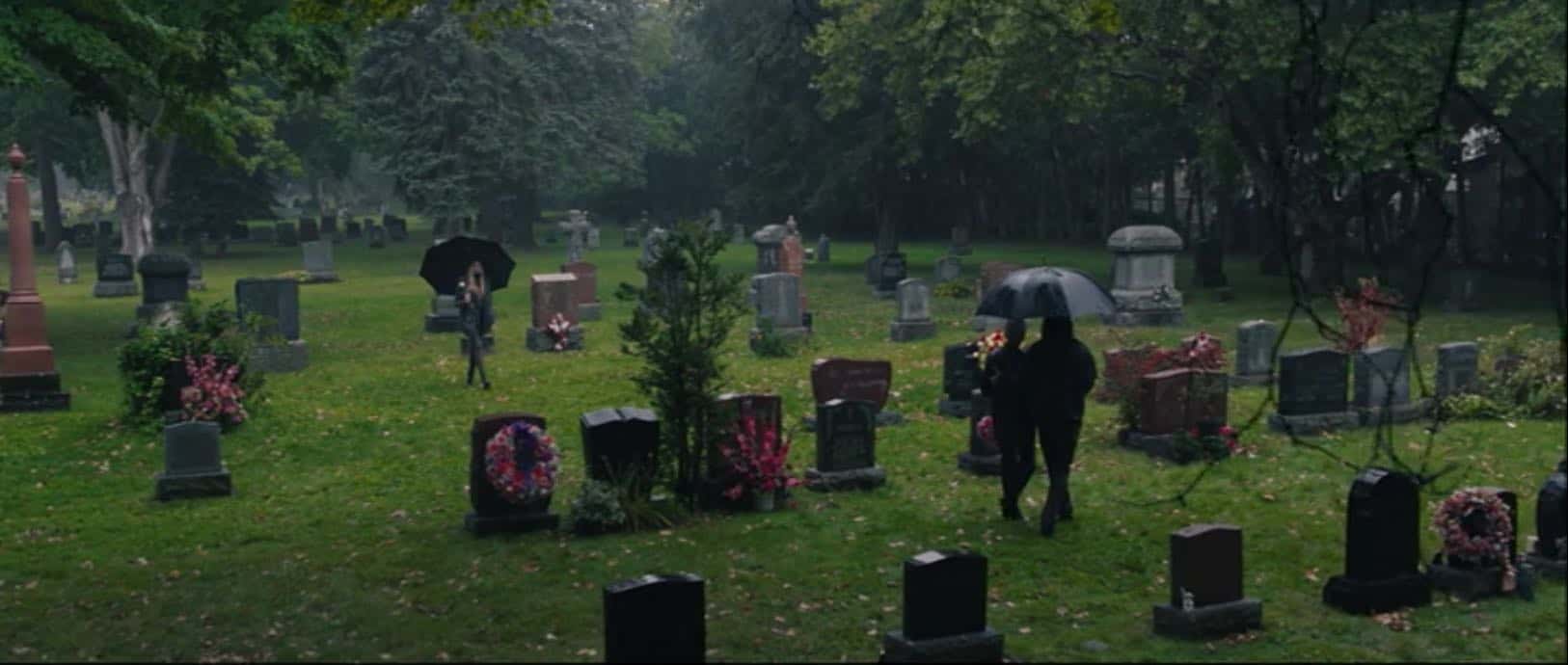
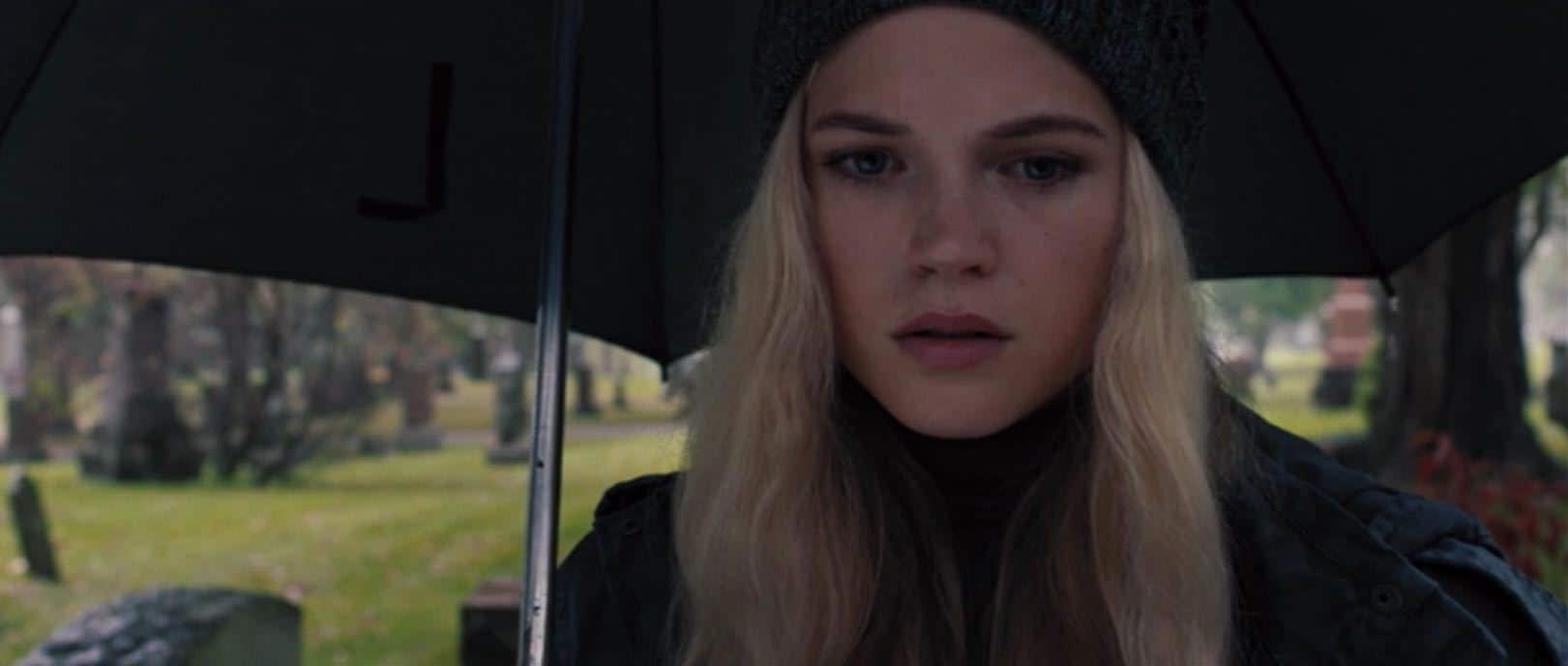
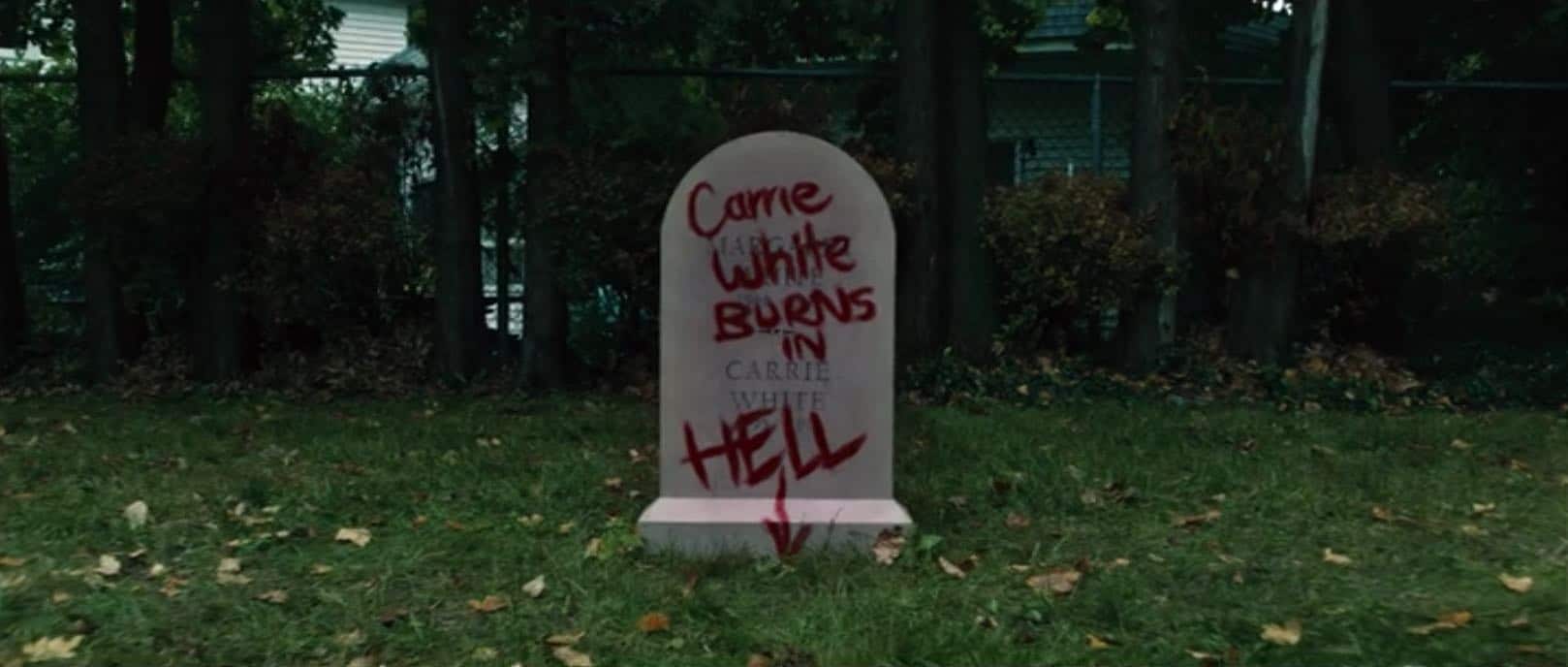
NEW SITUATION
Interestingly, we are shown the new situation before we’re shown Sue’s anagnorisis. Usually it’s not that way around. We know that she is pregnant with a girl and from the court scene we know that most of her friends are dead. We can extrapolate that Sue will give birth to a girl, and we might even wonder if Carrie has done something to that girl to imbue her with witchy superpowers, in the style of Rosemary’s Baby (1968).
This isn’t how the book ends. Somewhere else, a woman called Amelia Jenks is pregnant with a baby who turns out to have witch powers. It is implied that Tommy gets Sue pregnant, but the final scene is bookended with blood — Sue gets her period (which may actually be a miscarriage).
FOR FURTHER INVESTIGATION
The Story Grid Podcast Editor Roundtable podcast for Carrie

